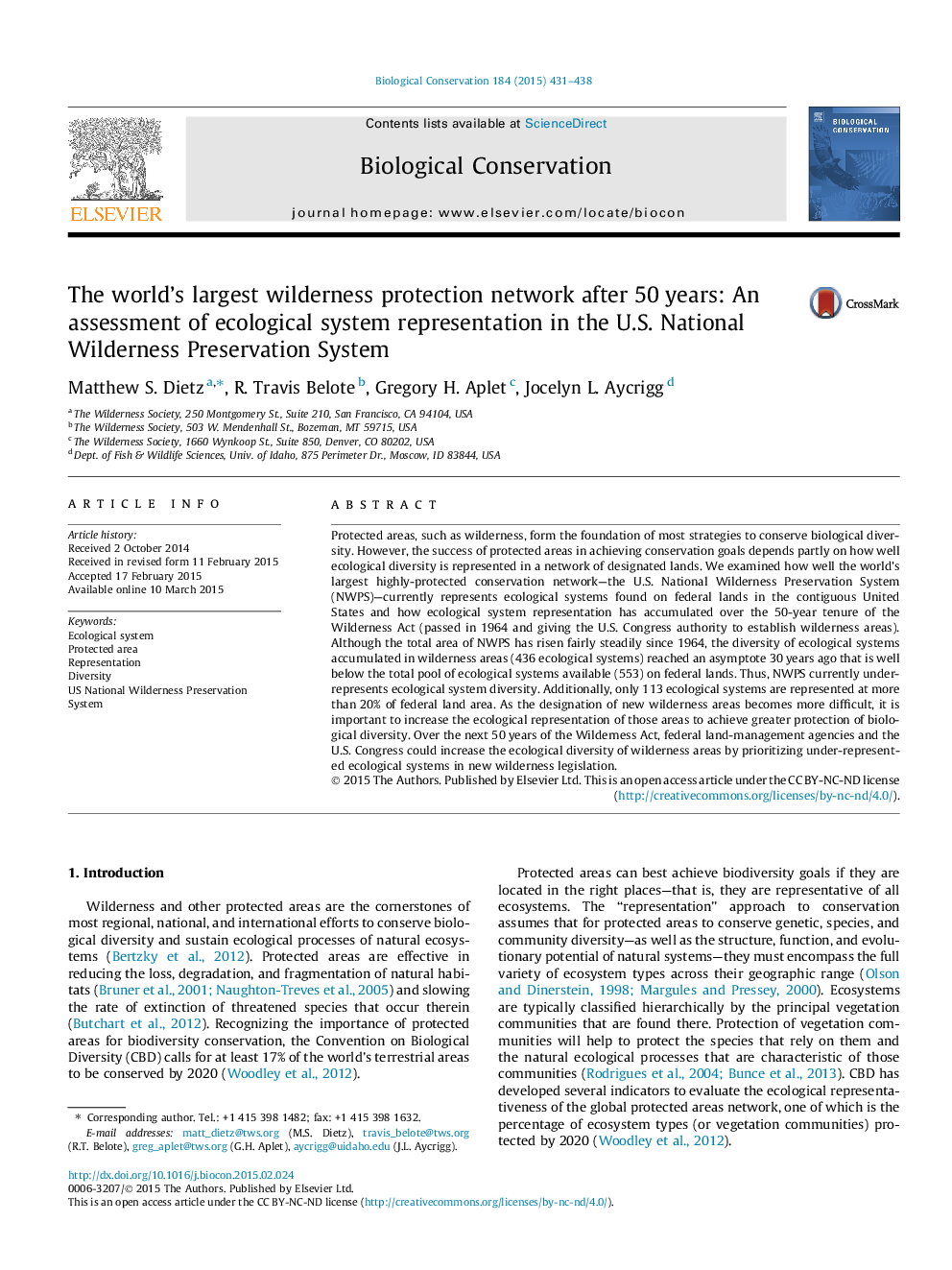| کد مقاله | کد نشریه | سال انتشار | مقاله انگلیسی | نسخه تمام متن |
|---|---|---|---|---|
| 6300094 | 1617917 | 2015 | 8 صفحه PDF | دانلود رایگان |

- Protected areas best conserve biodiversity if they are ecologically representative.
- The U.S. wilderness system is the largest of its type in the world.
- The wilderness system under-represents many ecological systems on federal land.
- Prioritizing new wilderness areas based on ecological representation is important.
Protected areas, such as wilderness, form the foundation of most strategies to conserve biological diversity. However, the success of protected areas in achieving conservation goals depends partly on how well ecological diversity is represented in a network of designated lands. We examined how well the world's largest highly-protected conservation network-the U.S. National Wilderness Preservation System (NWPS)-currently represents ecological systems found on federal lands in the contiguous United States and how ecological system representation has accumulated over the 50-year tenure of the Wilderness Act (passed in 1964 and giving the U.S. Congress authority to establish wilderness areas). Although the total area of NWPS has risen fairly steadily since 1964, the diversity of ecological systems accumulated in wilderness areas (436 ecological systems) reached an asymptote 30Â years ago that is well below the total pool of ecological systems available (553) on federal lands. Thus, NWPS currently under-represents ecological system diversity. Additionally, only 113 ecological systems are represented at more than 20% of federal land area. As the designation of new wilderness areas becomes more difficult, it is important to increase the ecological representation of those areas to achieve greater protection of biological diversity. Over the next 50Â years of the Wilderness Act, federal land-management agencies and the U.S. Congress could increase the ecological diversity of wilderness areas by prioritizing under-represented ecological systems in new wilderness legislation.
Journal: Biological Conservation - Volume 184, April 2015, Pages 431-438